Strapcode SKX Jubilee Review: Better Than The Stock Bracelet?
By: Lyndy Watkins
As any good post about a Seiko SKX, this one starts with the sale of my beloved beater watch and the thought that I could find a more worthy Seiko diver. The classic re-acquisition of a SKX trope holds true here. A few years ago I bought my first Seiko; it was the classic SKX175. It served as the perfect beater watch — it went hiking in Maine, swimming in Cancun, and exploring around Greece. I even bought a Super Oyster to upgrade the stock jubilee bracelet. About a year into owning the SKX, I thought it would be a great idea to sell it on the Reddit watch exchange and purchase a Seiko SRP773.
I loved the Turtle, but longed for the looks of the jubilee bracelet and red flair. Don’t get me wrong – the Turtle is technically the better watch (with the hacking and hand wound movement and applied indices), but it didn’t have the same charm. I modded the Turtle with a double-dome sapphire crystal and ceramic bezel, and despite the amazing results I halfway regretted the decision afterwards. My once beater watch turned into a (albeit great looking) potential risk for water damage.
I told my wife that I wanted to buy another SKX and in response she said “just don’t go over your shopping budget this month” — her standard response to any watch related purchase. Later that week I was browsing the Reddit watch exchange, and boom! There it was. A Seiko SKX175 in perfect shape, with (1) a Strapcode SKX Jubilee, (2) the stock jubilee, and (3) a black Crafter Blue rubber strap posted just minutes before. I looked at the seller’s history and we immediately struck a deal.
Initial Thoughts:
This leads us to the comparison. When I received the watch, the seller had the stock jubilee installed and the Strapcode SKX Jubilee was untouched in the original bag. Man, this guy knew how to take care of a watch. There wasn’t even a scratch. I immediately sized the new Strapcode Jubilee and I was blown away – this Jubilee bracelet screams quality. Even the spring bars are nice. The fitted end links, folding clasp, and links are all machined out of solid metal. None of this folding business that Seiko uses for the stock bracelets on their lesser priced models. I am genuinely impressed with the product – but how does it stack up overall in comparison to the stock SKX Jubilee? Let’s find out.
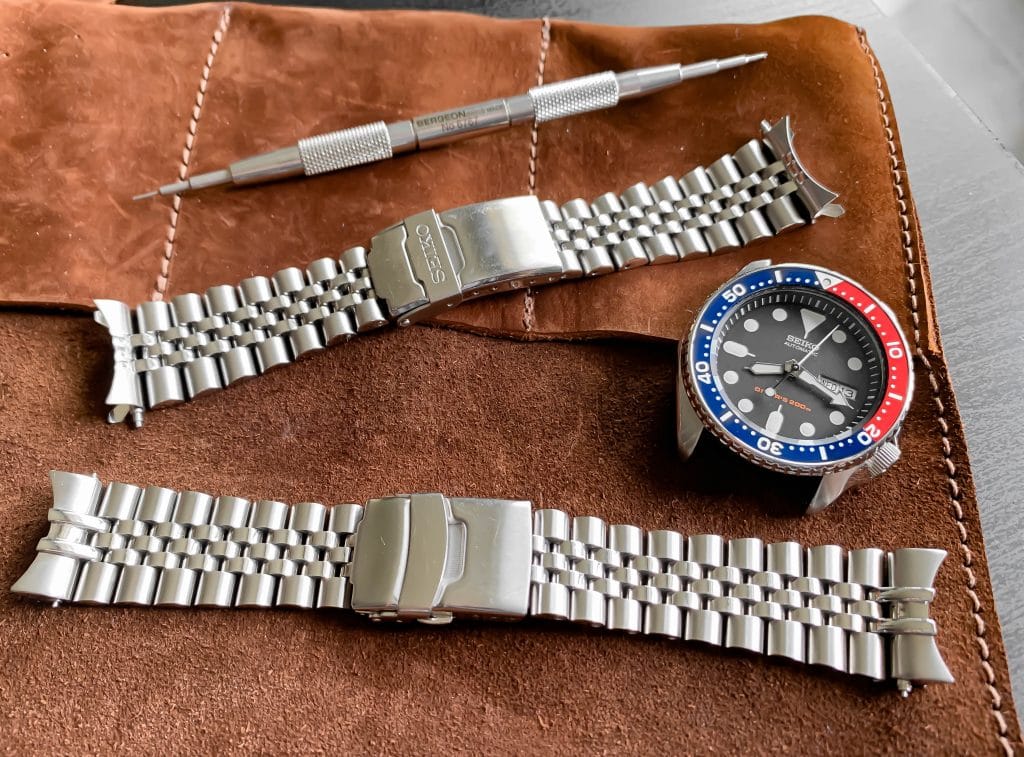
Solid Curved End Links:
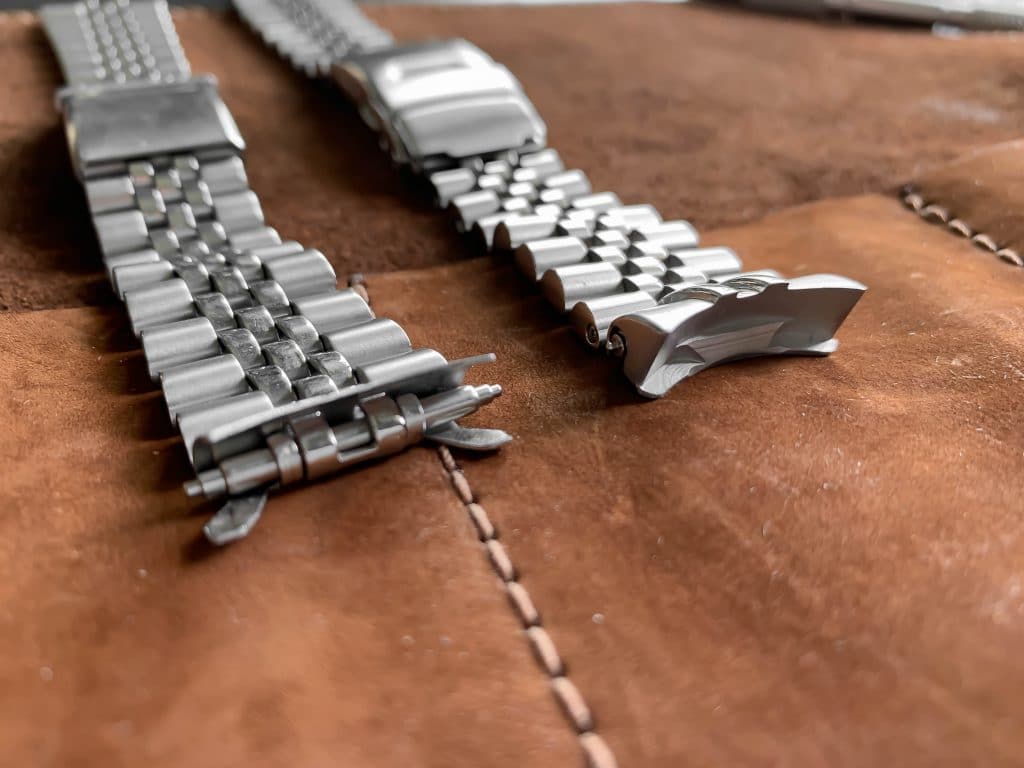
For me, this is biggest improvement the Strapcode SKX Jubilee makes over the stock bracelet. The solid end links not only curve perfectly around the the wrist, they seamlessly fit with the case of the watch. The stock bracelet has folded end links that are not integrated into the bracelet. You hook the last link of the bracelet into the end link, insert the spring bar, and attach it to the case of the watch. This clunky execution can be frustrating when reattaching the bracelet or attempting to store it. On the other hand, the Strapcode Super Jubilee is one solid part. The spring bar feeds through the solid piece of metal.
The Strapcode team did an excellent job measuring and fitting the end links to fit perfectly onto the case of the SKX. The prongs that attach to the first links of the bracelet gently curve out of the case. This adds to luxurious feel of the Strapcode SKX Jubilee bracelet as the stock one relies on gravity to pull the first links towards the wrist. Compared to the stock bracelet, the fit seems more secure on the underside of the case and contours more nicely to the top of the case.
I only have two issues with the Strapcode SKX Jubilee’s end links. The first is the play between the end links and the first link on the bracelet. The gap is inconsistent compared to the other links in the bracelet. Not a big deal, but it would have made more sense to match the tolerances. Second, the prongs on the end links don’t match the center links on the bracelet. They are more rounded, while the center links are crisp and sharp.
Machined Links:
When you first start to compare the two bracelets, the distinct rattle of the stock SKX jubilee overwhelms the quiet, solid sounds that come from the Strapcode Super Jubilee. The folded links and decreased tolerances from the stock bracelet feel much cheaper than the higher quality Super Jubilee. The bracelet has solid, five piece links. The link’s edges are extremely crisp, making the bracelet reflect light in a way that the stock one can’t – a striking difference to the stock bracelet’s more rounded links.
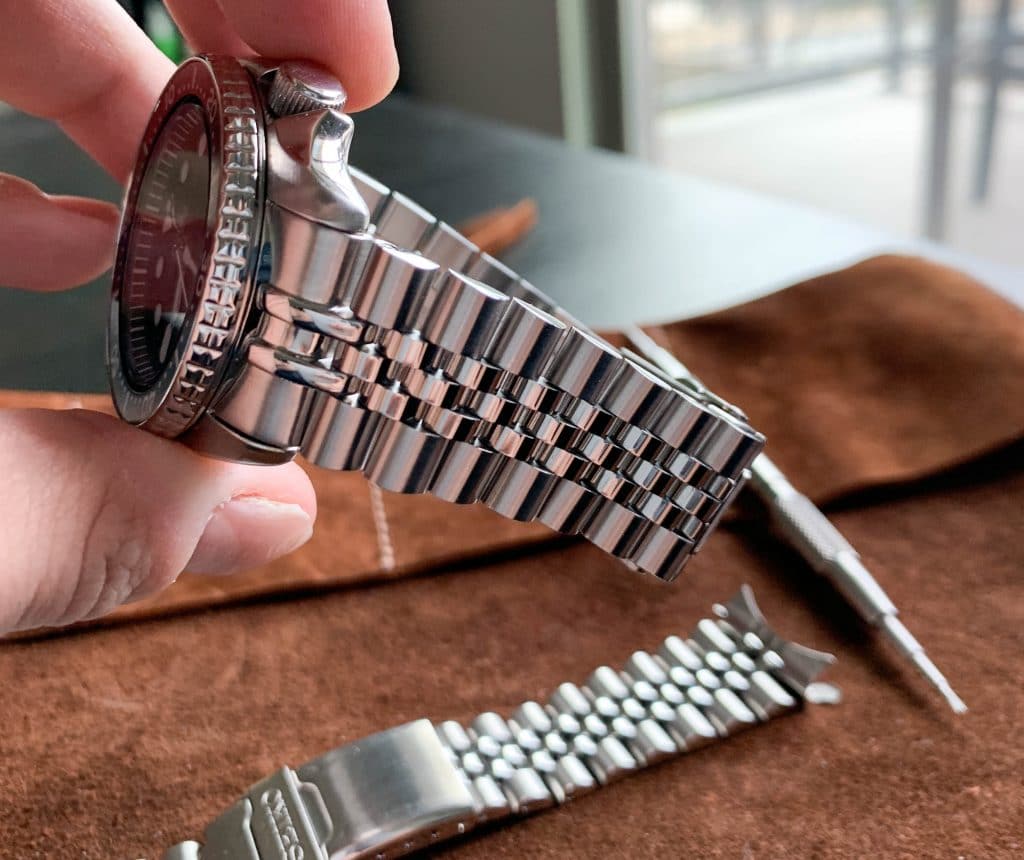
As a whole, you can easily tell the increased quality of the Strapcode Jubilee when you hold the watch sideways and allow gravity to pull the bracelets down. The Strapcode super Jubilee bends naturally, displaying the flexibility of the bracelet while still maintaining some sort of structure. On the other hand, the stock jubilee becomes limp, losing its shape due to the high tolerances and folded links.
On the wrist, you can tell a difference as well. The stock jubilee feels much more flimsy and catches on arm hair quite easily. The Super Jubilee feels more solid. The solid links help the watch hold more firmly on the wrist. It is a bit heavier, but you notice the weight because everything is held in place more securely than the stock bracelet.
Screw Adjusted Pins:
I have played around with several different types of bracelet adjustments. I loathe both the cotter pins and the friction pipe with collars bracelet adjustment types. They are a pain to remove and require more force than I feel comfortable applying to a watch. The stock bracelet uses cotter pins to adjust the strap. To remove links, you have to use a tool that pushes out the links, grab them with pliers, and insert them back into the bracelet with a small hammer. That’s ridiculous, right?
On the Strapcode Jubilee, things are much easier. It uses screw bars to remove links. All you do is use a small screwdriver to unscrew a small bit of the bar, turn the bracelet upside down, and tap out the bar. It is a joy to adjust and is a huge improvement over the stock method. When I got my first SKX, I had to take to a shop to adjust the bracelet. I feel comfortable adjusting the cotter pins now, but I would never choose it over the screw bars.
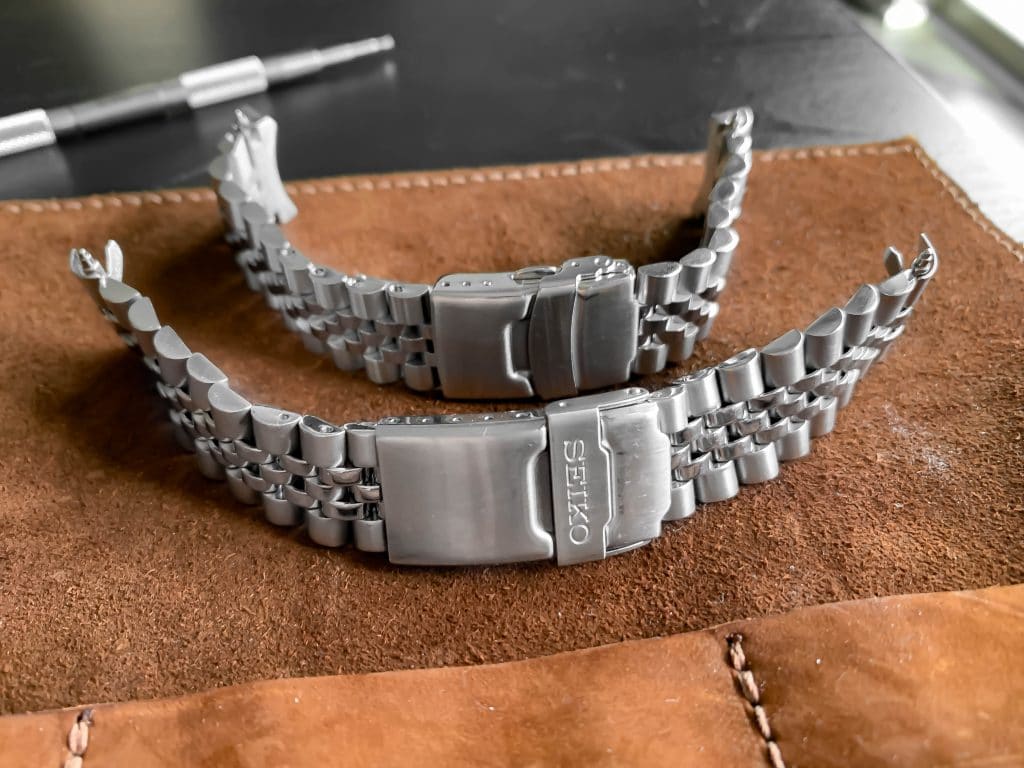
Unsigned Clasp
The push button deployant clasp with a safety on the Strapcode bracelet is amazing. The tight tolerances provide a solid feeling when closed, while the three microadjustment positions provide plenty of room to get the perfect fit on the wrist. The push buttons on the side feel solid and the safety folds over and clicks securely into place. However, the stock bracelet is not only made of a thinner metal, the friction fit is too stiff. In order to unfold the clasp, you have to pry the clasp open using more force that you think necessary.
I have only have one gripe with the Strapcode Super Jubilee’s clasp (although this applies to most aftermarket bracelets). I really wish it came signed. I know this wouldn’t work given Seiko would never approve it, but I miss having the Seiko logo on the bracelet. I compared the safeties, and they are not the same shape. You can’t remove the stock bracelet’s safety and install it on the Super Jubilee – this would be a huge improvement in my book.
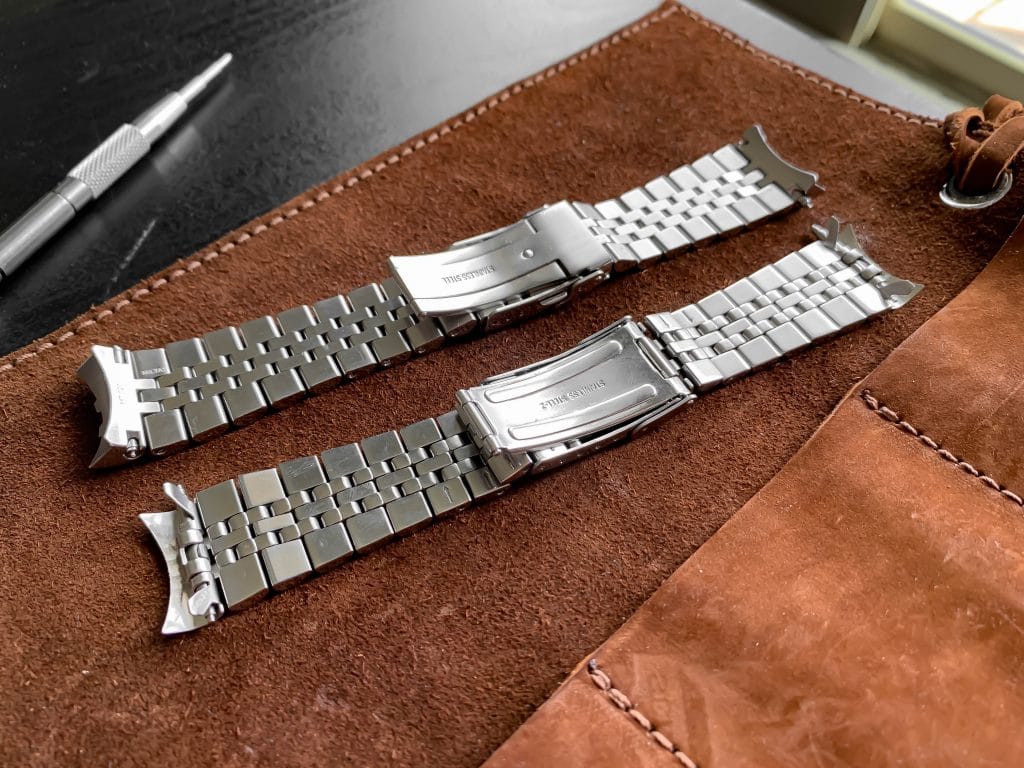
Conclusion:
If you love the look of the SKX on the jubilee bracelet, but hate the rattle and hair pulling, go order the Strapcode SKX Jubilee today. It’s not only an amazing upgrade to the stock bracelet, it’s an excellent value. This bracelet includes features only found on much more expensive watches, including the solid end links, screw adjusted links, and machine milled clasp.
There probably isn’t an easier and more affordable mod to improve the comfort and looks of your SKX.
Check it out on Amazon for the incredible value of about $65.

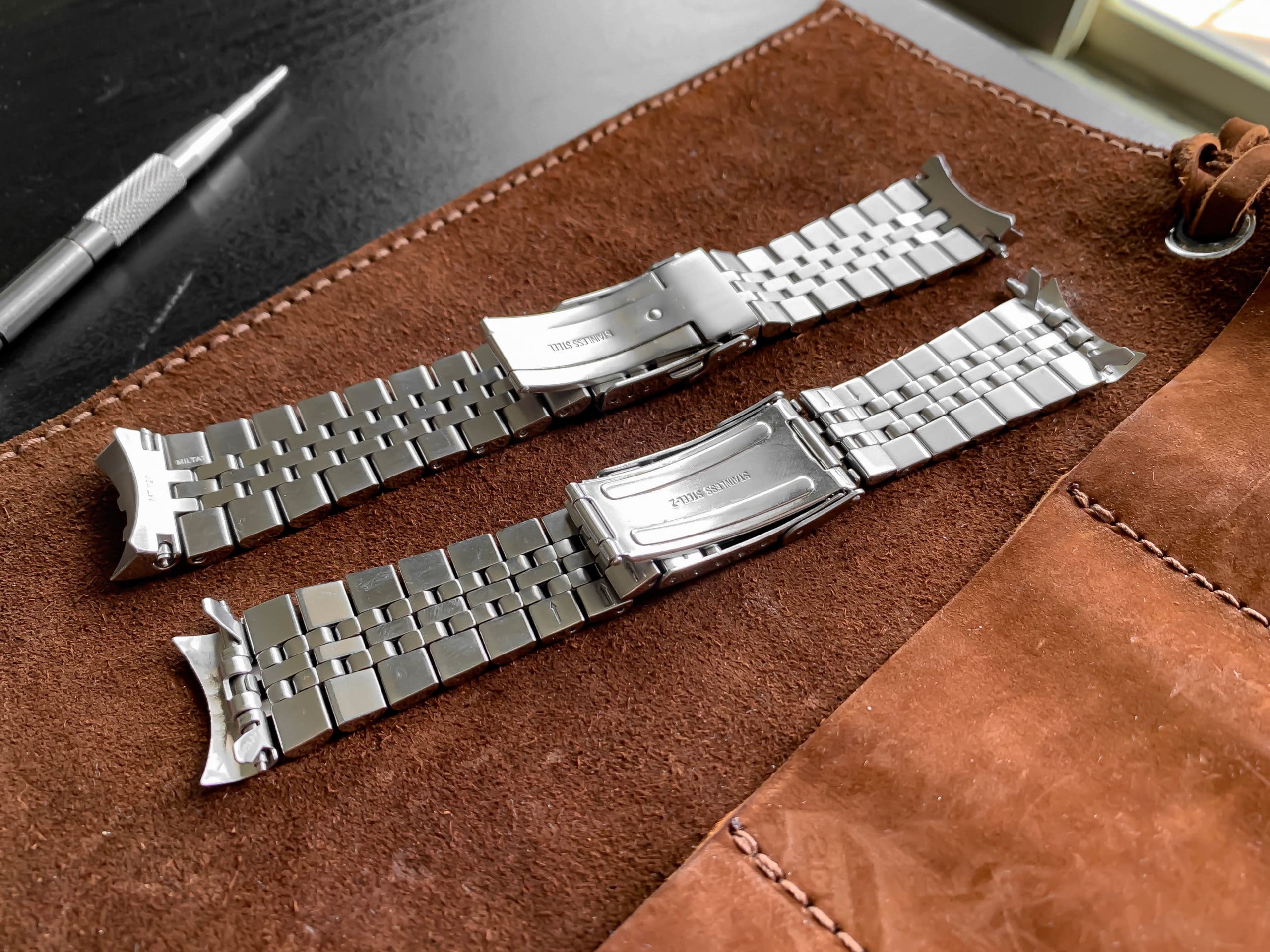
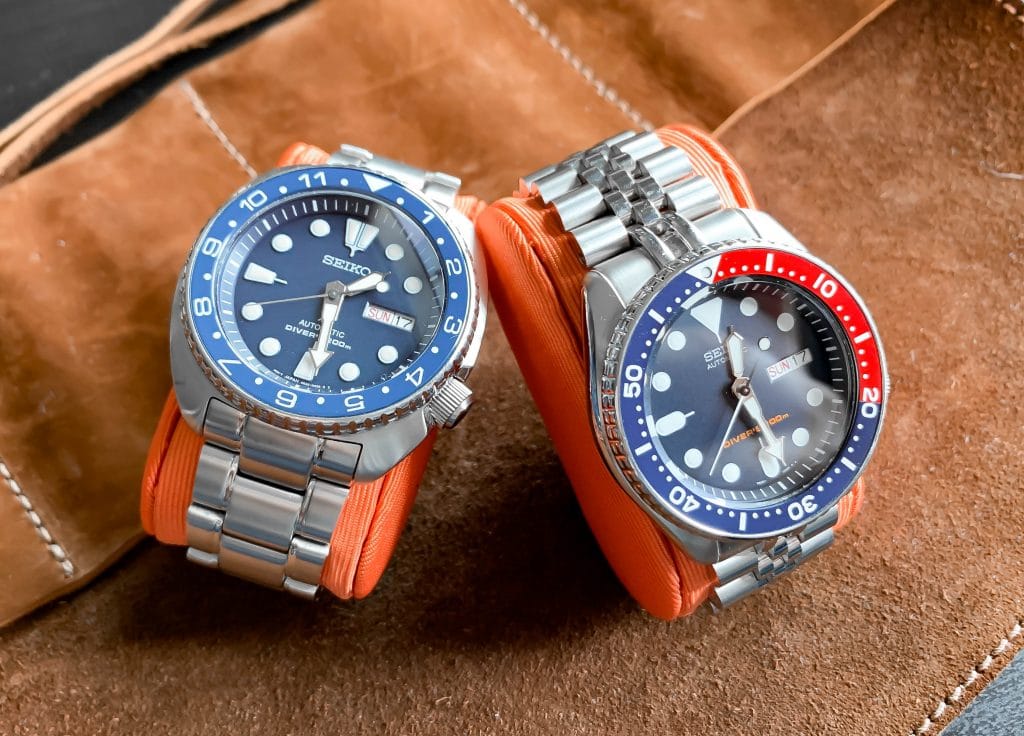
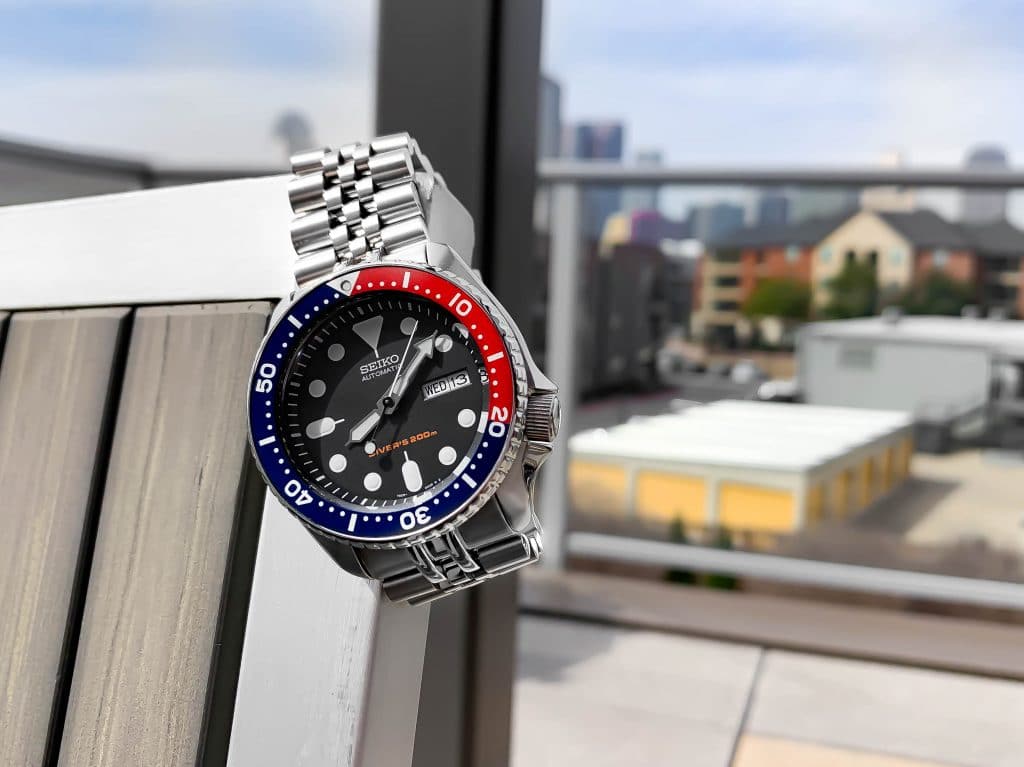
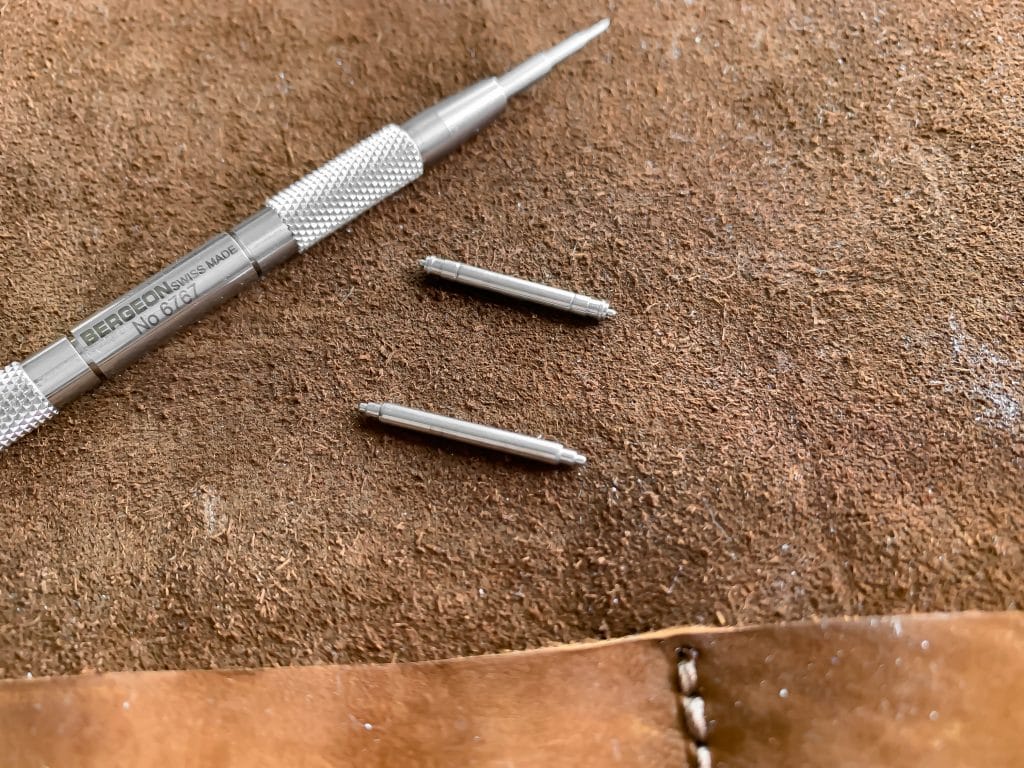
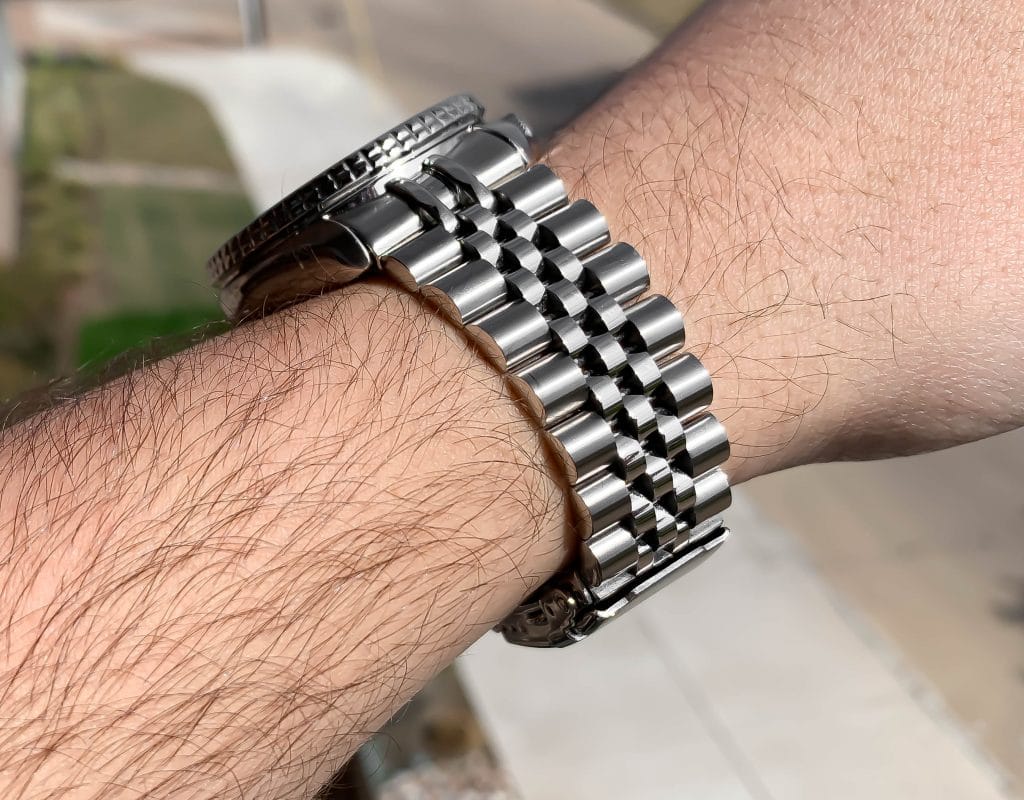
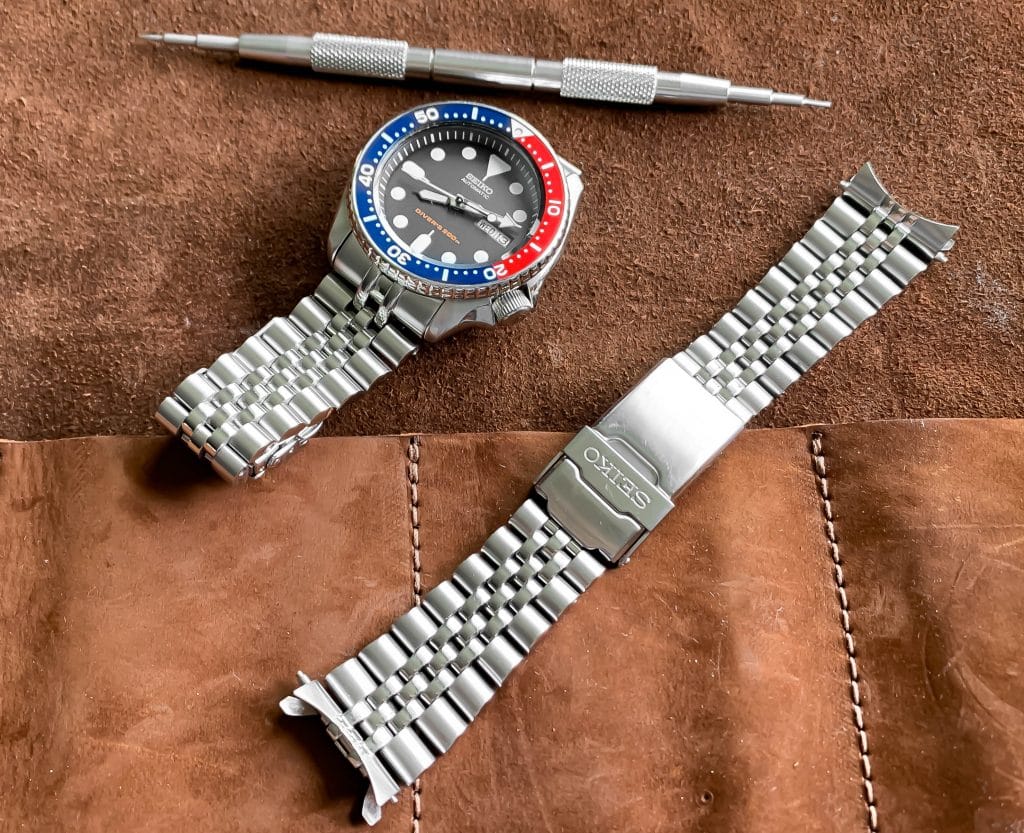
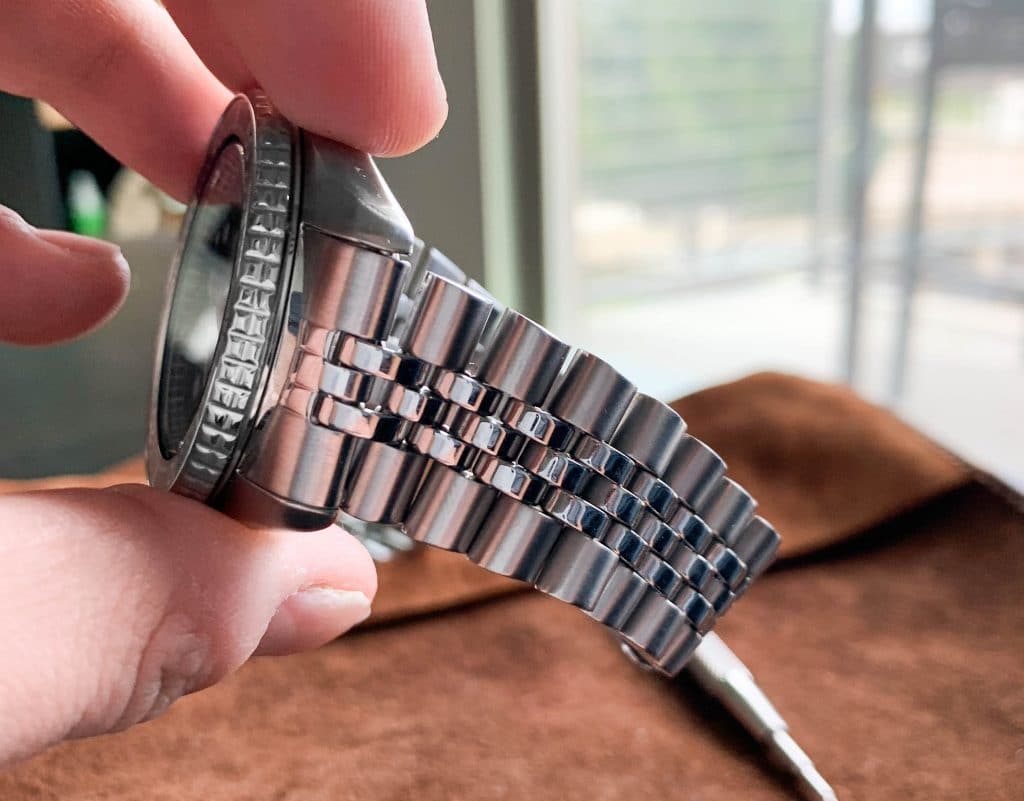
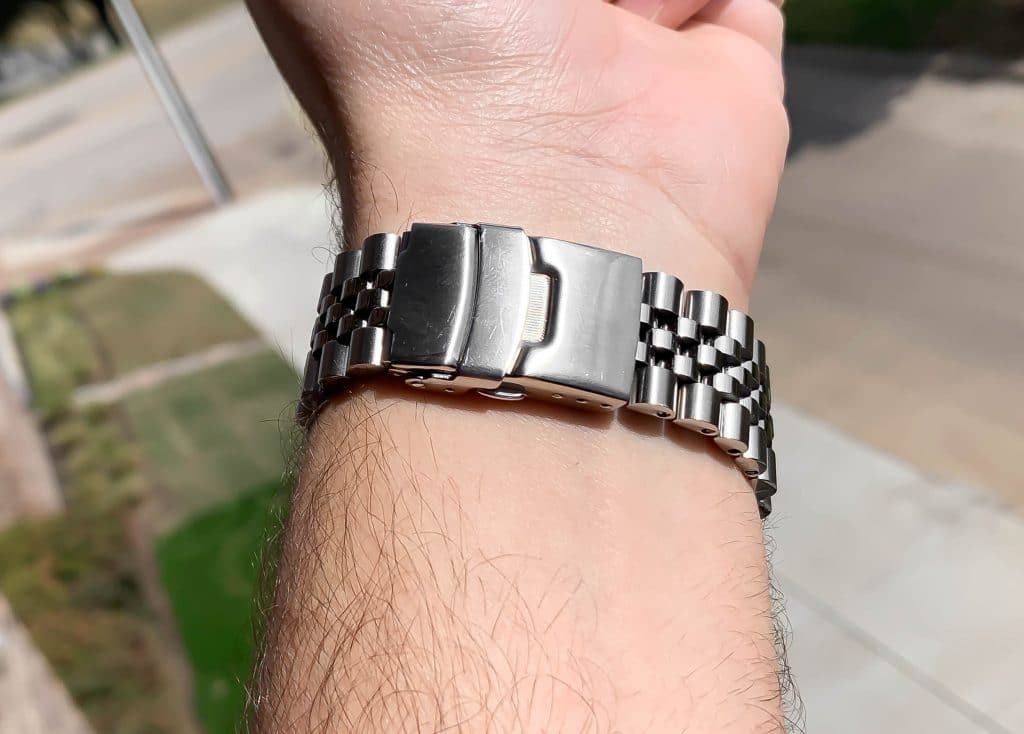
you can change the clasp with a seiko Marinemaster clasp.
Great review. Same story here, bought and flipped my first SKX for CWC SBS divers, then regretted it and got another. This time it’s for keeps. The stock rubber lasted 2 years before it perished. So I now rotate between an Uncle Seiko tropic, a Stracode president with marine master ratcheting clasp (I didn’t like the unsigned clasp either), the stock jubilee and a Phoenix straps UK Mod issue NATO strap in admiralty grey.
My SKX007 is primarily a summer watch for me so it’s very happy on a black CrafterBlue rubber band.
I may just have to try the Strapcode though.